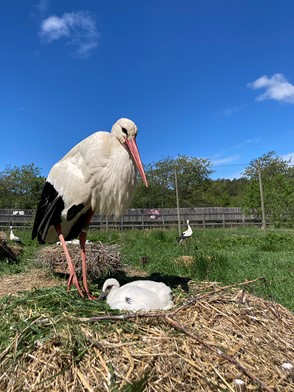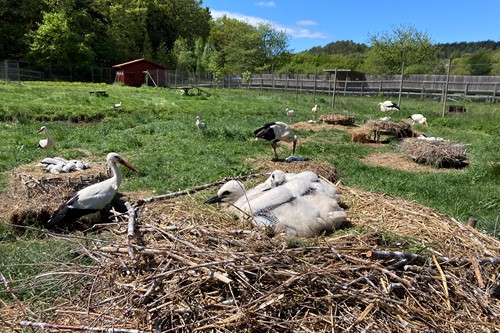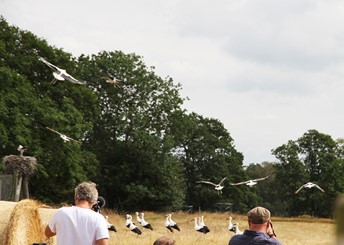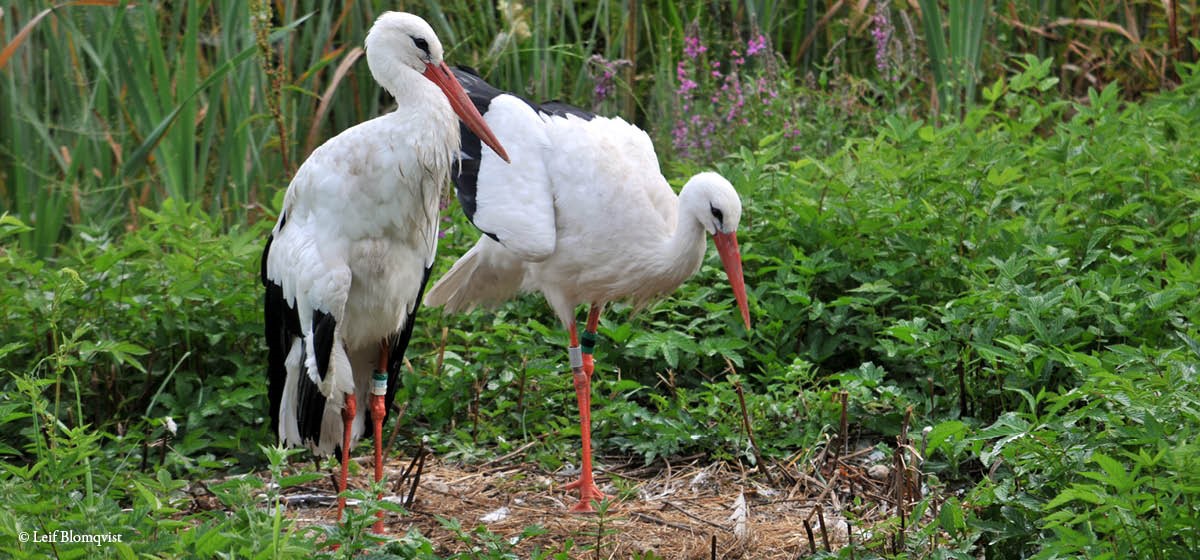White stork conservation
The white stork, Ciconia ciconia, is a popular bird around Europe and the species was for a long time something of a symbol of the southern Swedish agricultural landscape. After a sharp decline in population in the early 20th century, the white stork died out in Sweden in the 1950s.
The extinction was a result of extensive excavations of wetlands made during the 19th and early 20th century to create arable land. In Skåne, 90% of the wetlands that existed at the beginning of the 19th century have been drained out and since this is where the stork found its food, it quickly died out.
The loss of wetlands across Europe is the main cause of the decline of the species throughout Western Europe. A new major threat to the species in the wild is high-voltage lines as these are the most common cause of death both at breeding sites and along the migration routes.

What we do at Nordens Ark
Nordens Ark has been collaborating with the Swedish Stork Project for several years to build up a wild stork population in Sweden. Nordens Ark holds about 12–15 pairs of storks in the wildlife park's wetland area. All the chicks hatched at Nordens Ark are sent down to Scania every summer to be released into the wild together with hundreds of other storks.
Before the storks are released, they are ringed, which is a prerequisite for being able to identify each individual at a later time. A number of storks have also been fitted with GPS transmitters. Thanks to these transmitters, we can follow the migration routes of the storks and thereby gain more knowledge of where and how they migrate. Nordens Ark also participates in the annual inventory of nesting storks in the wild, where all wild yearlings are counted and ringed.

News from the project – January 2025
On 27 July, 18 storks hatched at Nordens Ark were released alongside around 20 juveniles from the Swedish Stork Project. A smaller group of late-hatched storks was released on 17 August after additional growth time. Over nearly 30 years, Nordens Ark has contributed 180 storks to this reintroduction effort.
It is always exciting to receive reports of “our” storks in the wild. In May 2024, one of our storks was spotted near Groningen, the Netherlands. A photograph of the leg ring confirmed that M765, hatched at Nordens Ark in 2023, was released in Sweden in July before migrating south. These storks typically stay in Sweden for a few weeks before migrating, with the hope that they will return in a few years to breed.

In collaboration with
The Swedish Stork Project



